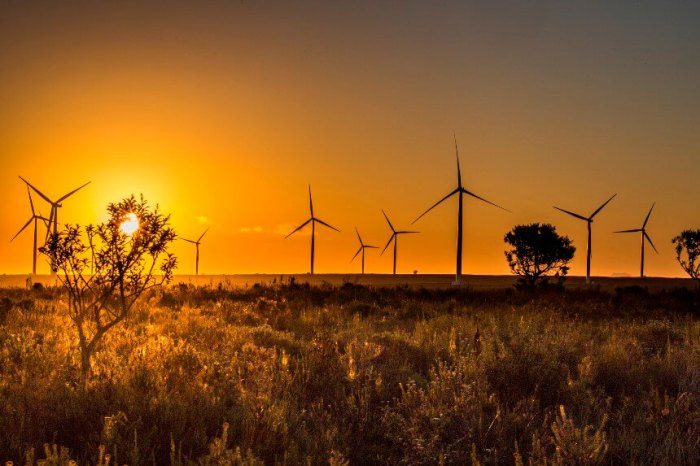The wind energy markets in Africa are progressively growing in Africa. Wind strength found in Africa can run small wind turbines that need an average wind speed greater than 4 meters per second (ms) (9mph) while utility –scale wind energy plants need wind speed of 6m/s (13mph).
The best wind in Africa is located in the coastal areas of the continent: in the North, East, West and South. The five biggest markets come from this areas, it is key to clarify that the markets have been ranked in function of their recorded capacity, either under construction or operational.
Construction Review Online looks at five largest wind energy markets in Africa.
South Africa
South Africa is the key contributor of the wind energy production in the whole continent. It launched the Renewable Energy Independent Power Producers Procurement Programme (REIPPPP) back in 2011.The programme was designed to help meet the country’s renewable power target and to motivate the renewable energy industry in the country.
REIPPP is run by the IPP Office and the programme is structured in rounds or bid windows. So far there have been 4 bid windows. The chief valuation criterion for the rounds selection process is pricing but other factors like employment, local content and black economic empowerment also play a part. By 2011, a entirety of 1,170 MW of wind turbine capacity has been constructed and another 840 MW is presently on the works .South Africa hopes to install 8,400 MW of wind capacity by the year 2030.
The REIPPPP has been extremely helpful in helping to meet the country’s power demand.
Morocco
Before the beginning of the South African market, the wind industry on the continent was mainly dominated by North African countries. Morocco currently sits in second position in terms of installed capacity. 870 MW have already been installed and another 50 MW is under construction. Morocco has a high electrification rate compared to other sub Saharan African states. The exploitation of the renewable resources is considered a way to aid the country in becoming self-sufficient. Through the Moroccan wind energy programme, ran by a public body, the government has established a target of 2 GW of installed wind power by 2020 for an investment of USD 3.5 billion.
Egypt
Egypt occupies the third position. It enjoys outstanding wind regimes, mostly in the Suez Gulf where the average speed reaches 10.5 m/s. The market kick-started around15 years ago, they have built almost 750 MW of wind capacity. Egypt goals are to become the key renewable energy center of North Africa, with manufacturing of components and relevant technical training skills. Egypt has a national target to 4.3 GW of renewable energy to its national grid by 2022. Wind energy is a fundamental part of these renewable energy developments as it will account for about half (2 GW) of the set target.
Due to government support the country’s wind market is offering great prospects which have helped with getting the investors attention and the confidence in Egypt’s renewable energy future. They have introduced affordable Feed in Tariff (FiT) schemes and the government has plans to invest more than USD $10 billion in the renewable power projects in the next ten years. The Egyptian government has been actively encouraging investment in the energy sector
Ethiopia
East Africa’s coast is gifted with wind resources and has been advancing with commercial scale projects. Ethiopia has installed over320 MW of wind farms to date. Remarkably, the dry season in Ethiopia is also the windy season, meaning that wind energy is a good accompaniment to hydropower, which is biggest source of renewable energy. Over 75% of Ethiopians are not connected to the national grid and mostly living in countryside areas, Ethiopia’s energy needs are enormous. The government needs to increase its electricity production by 20 to 25% per year, according to figures from the country’s energy ministry so as to meet the energy demand.
Kenya
Kenya is at the fifth position, thanks to the Lake Turkana project. The wind farm is still under construction but it will be the largest on the continent and would boost Kenya’s wind capacity from 14 MW to 324 MW.


